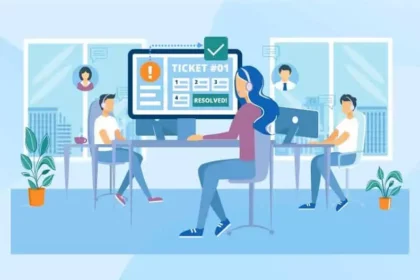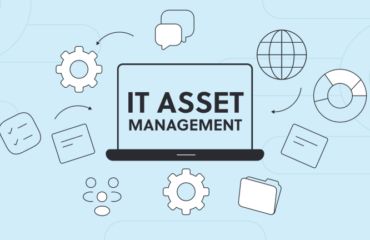
In today’s fast-paced digital environment, businesses must stay on top of IT issues to maintain smooth operations. An IT ticketing system is a vital tool for managing, tracking, and resolving technical problems. Whether it’s addressing a software glitch, hardware malfunction, or network outage, an IT ticketing system ensures these problems are efficiently handled. This article delves into what an IT ticketing system is, how it works, and why it’s essential for organizations of all sizes.
Understanding IT Ticketing Systems
An IT ticketing system, also known as a helpdesk or service desk system, is a software platform designed to manage and streamline IT support tasks. When users or employees encounter technical issues, they submit a “ticket” through the system, which contains details of the issue. The IT team then tracks the ticket from its initial submission to resolution.
The primary purpose of an IT ticketing system is to ensure that no issue goes unresolved and that the IT department can prioritize, assign, and monitor tasks effectively. By automating workflows and providing a structured approach to problem resolution, these systems save businesses both time and money.
Key Features of an IT Ticketing System
To better understand the value of an IT ticketing system, let’s explore some of its key features:
Ticket Management
The core functionality of an IT ticketing system is managing tickets. Tickets serve as digital records for tracking issues, requests, and incidents. Each ticket typically includes:
- Issue description
- Priority level (low, medium, high)
- Status (open, in progress, resolved, closed)
- Assigned IT technician
- Progress notes and solutions
Effective ticket management ensures support teams can track issues in real-time, reducing delays and miscommunication.
Automated Workflows
Automation is a game-changer in IT ticketing systems. Workflow automation eliminates the need for manual task assignments by routing tickets to the appropriate technician based on predefined rules. For example, an issue categorized as a “network outage” can automatically be assigned to a network specialist. This saves time and ensures tickets are handled by the most qualified personnel.
Prioritization and SLAs
Prioritization features allow IT teams to address critical issues first. Many ticketing systems offer Service Level Agreement (SLA) management tools, ensuring support teams meet response and resolution deadlines. High-priority tickets can trigger alerts or escalations if they are not addressed within a set timeframe, ensuring compliance with policies or client agreements.
Knowledge Base Integration
A knowledge base is a repository of helpful articles, FAQs, and troubleshooting guides. IT ticketing systems often integrate with a knowledge base, allowing users to resolve common issues independently, without creating a ticket. This reduces the workload on IT teams and empowers users to find solutions on their own.
Reporting and Analytics
IT ticketing systems provide reporting and analytics tools to help managers monitor performance, identify recurring issues, and analyse technician workloads. Reports on ticket resolution times, user satisfaction, and incident types help organizations make data-driven improvements to their support processes.
Multi-Channel Support
Advanced IT ticketing systems offer multiple communication channels—such as email, phone, chat, and web portals—allowing users to report issues in their preferred way. This feature ensures that tickets are captured regardless of the submission method.
Mobile Access
With remote work becoming more common, IT teams need access to the ticketing system from anywhere. Mobile apps or responsive web interfaces allow technicians to track and resolve issues on the go, enhancing flexibility and ensuring faster resolution, especially for time-sensitive problems.

Benefits of Using an IT Ticketing System
Implementing an IT ticketing system offers several advantages:
- Improved Efficiency
By centralizing all IT requests and issues, the ticketing system simplifies workflows for the IT team. Tickets are easy to track, assign, and prioritize, resulting in faster resolution times. Automation further enhances efficiency by reducing manual tasks. - Enhanced Collaboration
An IT ticketing system fosters collaboration among IT staff by enabling multiple technicians to contribute to a single ticket. This is particularly useful for complex issues that require input from specialists in different areas. It also improves communication between the IT team and users by providing real-time updates through the ticket. - Better Organization and Documentation
Each ticket serves as documentation of an issue, providing a detailed record that can be referenced in the future. This helps technicians resolve recurring problems more efficiently and maintains a history of incidents and solutions, which can be valuable for audits and compliance. - Increased Accountability
With tickets assigned to specific individuals and tracked throughout their lifecycle, IT teams maintain better accountability. Managers can easily see who is responsible for each task, ensuring no ticket slips through the cracks. - Scalability
IT ticketing systems are scalable, accommodating the needs of both small businesses and large enterprises. As an organization grows, the system can handle an increasing number of requests without overburdening the IT team.
Why Your Business Needs an IT Ticketing System
Regardless of the size of your organization, an IT ticketing system offers measurable advantages:
- Faster Response Times
With a ticketing system, issues are logged immediately and routed to the appropriate team members. Automation ensures high-priority tickets receive prompt attention, minimizing downtime and disruptions. - Reduced IT Costs
By streamlining processes and reducing inefficiencies, an IT ticketing system helps save money. It minimizes the time technicians spend on each issue and allows users to resolve common problems through self-service, optimizing resource allocation. - Improved User Experience
Fast and reliable IT support translates into a better user experience for both employees and customers. When issues are resolved promptly, users remain productive and satisfied. A well-implemented ticketing system also provides transparency by keeping users informed about the status of their requests, reducing frustration.
Conclusion
An IT ticketing system is essential for modern IT support, offering an efficient way to manage and resolve technical issues. From ticket tracking and automation to reporting and SLA management, these systems empower IT teams to provide high-quality support while minimizing costs and improving response times. Whether you’re a small startup or a large enterprise, adopting an IT ticketing system is a smart investment that will streamline operations and enhance user satisfaction.
For businesses seeking comprehensive IT ticketing tools, GreenITCo offers innovative solutions tailored to meet organizational needs. Their robust software, which includes integrated ticketing and asset management features, ensures no issue goes unresolved while maintaining optimal productivity across teams.



[…] glitches, or managing hardware failures, having a well-structured IT ticketing system is crucial. A helpdesk ticketing system serves as the backbone of IT support by streamlining communication between users and IT teams, […]